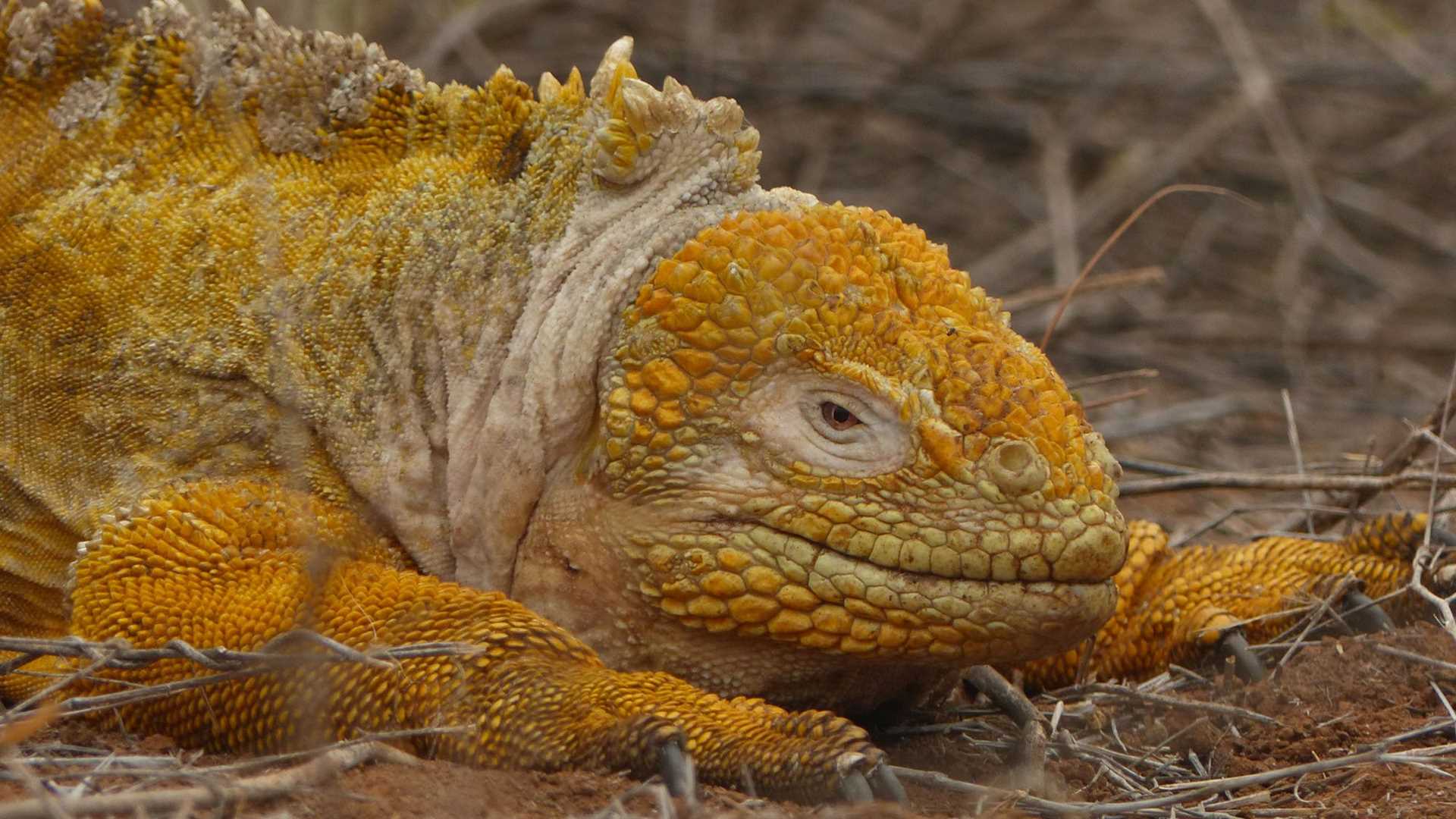Cerro Dragon, meaning “dragon hill”, lies on the northwest coast of Santa Cruz Island. Yesterday we saw a vibrant city, human habitation and the many ways humans have found to survive on a Pacific Island. Today, on this different site on the same island, it looks impossible. We might as well be on a different island entirely, a different planet almost! This area is dry as a bone, due to its situation on the rain shadow side of a tall island; no rain has fallen in many months. When it did, back in January, it was heavy for a very brief time only.
But the flora and fauna has been going through these cycles of “boom or bust” for millennia. The incense trees, “Palo Santo” of the genus Bursera, are adapted to producing leaves at the same time as flowers, and fruit a week or two later. Just in case the rains don’t last, which they didn’t this year.
The Galapagos land iguanas also have adapted to long periods without rain. That is what has made them excellent colonizers; patient acceptance of the conditions in the face of scarcity. Not that they can really do much to change the situation, unlike we humans who continually change our environments. Today we found over eight separate land iguanas laying quietly on the ground, most near a burrow or under a prickly pear cactus tree. One in particular was outstanding: bright yellow evenly over his entire body. Most large males are bright around the head area, but also have a reddish tinge on their backs. This individual was pure gold.
The Darwin finches were foraging in flocks – small-beaked, medium-beaked and even a few large-beaked individuals were spotted by our keen-eyed birders. Black-necked stilts, pintail ducks and an introduced smooth-billed ani put in appearances as well.
The second half of the morning was spent by most of us in the area known as Guy Fawkes Islets, which are off-shore remnants of volcanic tuff cones perfect for drawing in fish life, and snorkelers, from around the globe. White-tipped reef sharks were the definite thrill of the outing, but I really enjoyed the surprise appearance of a red spiny lobster from under a rocky ledge. Rarely are they seen during daylight hours, but this individual was brazen, for a few minutes at any rate!
The afternoon was spent searching for marine life, which we found in the form of bottle-nosed dolphins, followed by a few presentations; our National Geographic Photographer Kike Calvo spoke about his journey to prominence in the world of photography, and I gave a presentation about the ocean environment around the islands.
Wine tasting finished the day as we circumnavigated around Daphne Major Islet at sunset…accompanied by magnificent frigatebirds, who later disappeared in favor of the night-flying and endemic swallow-tailed gulls. It was another incredible day in the Enchanted Isles.







